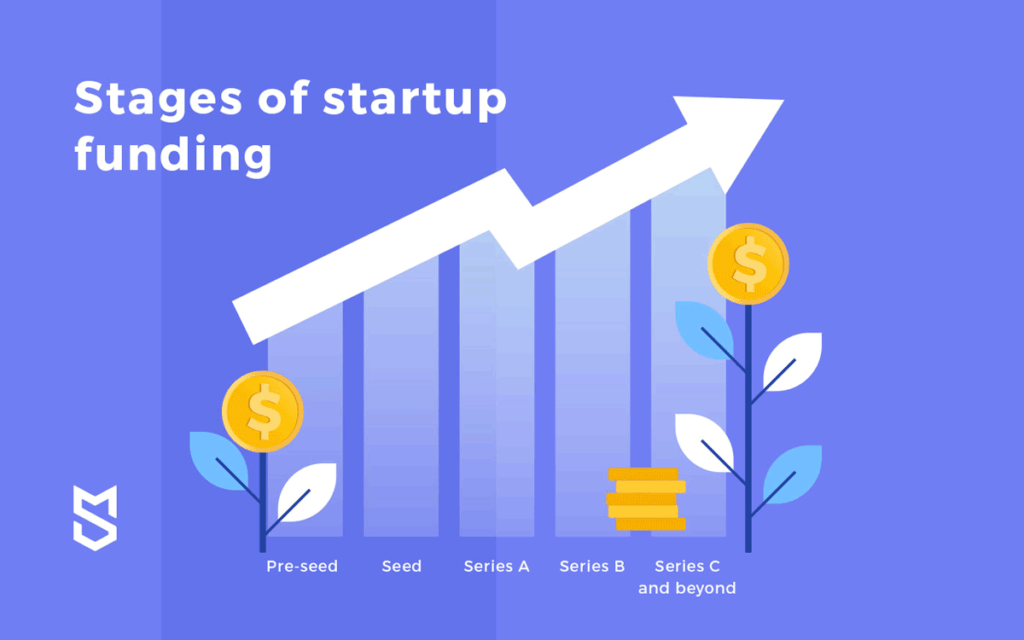In the competitive world of startups, having a great idea is just the beginning. To turn that idea into a successful business, entrepreneurs need to secure funding at various stages of their startup’s lifecycle. From the initial pre-seed stage to the possibility of an IPO, understanding the different funding rounds is crucial for every entrepreneur. In this comprehensive guide, we will delve into the various startup funding stages, the key players involved, and the potential funding amounts at each stage.
1. Pre-seed Funding Stage
The pre-seed stage is the earliest stage of funding, where entrepreneurs are getting their operations off the ground. During this stage, startups rely on their own resources, also known as bootstrapping, to scale their business. This could involve working overtime, taking on extra jobs, or investing personal savings into the startup.
Entrepreneurs in the pre-seed stage focus on building and distributing their product or service effectively. They may seek guidance from experienced founders, work on developing a winning business model, and resolve any necessary legal issues. While investors may not typically invest in exchange for equity during this stage, it is essential for startups to determine their viability and potential costs.

Potential Investors of Pre-Seed Stage
-
Startup Owners
-
Friends and Family
-
Early Stage Venture Funds (Micro VCs)
Startup Valuation in Pre-Seed Stage
Startups in the pre-seed stage are typically valued between $10,000 to $100,000.
2. Seed Funding Stage
The seed funding stage is where startups receive their first significant external funding. It is crucial for startups to secure this funding as approximately 29% of startups fail due to a lack of capital during the early stages. Seed funding allows startups to fund product launches, initiate marketing campaigns, hire key personnel, and conduct market research.
During the seed funding stage, investors take a risk by investing in startups that have not yet proven their business model. Startups provide equity in exchange for seed funding, giving investors a stake in the company. This funding round sets the foundation for the startup to flourish and grow.
Potential Investors of Seed Stage
-
Friends and Family
-
Angel Investors
-
Early Stage Venture Funds (Micro VCs)
-
Crowdfunding Platforms
Startup Valuation & Fundraising in Seed Stage
Startups eligible for seed funding are typically valued between $3 million to $6 million. The seed funding stage can raise anywhere from $50,000 up to $3 million for a promising startup.
3. Series A Funding Stage

The Series A funding stage is the first round of venture capital financing, typically undertaken by startups that have developed a product, acquired a customer base, and have consistent revenue flow. Startups seeking Series A funding are looking to scale their operations across different markets.
To attract investors during the Series A stage, startups need a solid business strategy that demonstrates the potential for long-term profits. It is also crucial for startups to start building relationships with angel investors and venture capitalists during this stage. Series A funding is not just about great ideas; it is about turning those ideas into successful, money-making organizations.
Potential Investors for Series A
-
Accelerators
-
Super Angel Investors
-
Venture Capitalists
Company Valuation & Fundraising in Series A
Startups aiming for Series A funding typically have a valuation between $10 million to $30 million and can raise approximately $15 million during this stage.
4. Series B Funding Stage
Startups that have successfully gone through the seed funding and Series A stages reach the Series B funding stage. By this point, they have a substantial user base, steady revenue streams, and a proven track record of growth. The Series B funding stage focuses on expanding market reach, increasing market share, and forming operational teams.
While the process and key players in the Series B stage may be similar to previous funding rounds, there is an addition of new venture capital firms specializing in investing in well-established startups. Series B funding enables startups to meet the demands of their customers, compete in competitive markets, and scale their operations.
Potential Investors for Series B
-
Venture Capitalists
-
Late-stage VCs
Company Valuation & Fundraising in Series B
Startups in the Series B funding stage typically have a valuation between $30 million to $60 million and can raise approximately $30 million to further accelerate their growth.
5. Series C Funding Stage
The Series C funding stage is for startups that have already achieved growth milestones and are ready to expand their operations on a global scale. Startups at this stage focus on funding activities that help them build new products, reach new markets, and potentially acquire other startups in the same industry.
Investors in the Series C stage are looking to fund successful startups that have already proven themselves as operating successes. Hedge funds, investment banks, private equity firms, and other financial institutions are willing to invest significant amounts of money in startups at this stage. Startups must have a strong customer base, stable revenue streams, and a track record of growth to qualify for Series C funding.
Potential Investors for Series C
-
Late-stage VCs
-
Private Equity Firms
-
Hedge Funds
-
Banks
Company Valuation & Fundraising in Series C
Startups in the Series C funding stage may have valuations ranging from $100 million to $120 million and can raise approximately $50 million to support their expansion plans.
6. Series D Funding Stage and Beyond

Not all startups reach the Series D funding stage, as it is typically reserved for special situations such as mergers or if the startup has not yet achieved its growth goals. Startups may consider Series D funding if they are contemplating a merger with a competitor or need additional funding to stay afloat.
Series D funding allows startups to negotiate issues head-on, potentially acquiring other startups through a merger. It is important to note that startups considering Series D funding should already be well-established, have a strong customer base, and a proven history of growth.
Potential Investors for Series D
-
Late-stage VCs
-
Private Equity Firms
-
Hedge Funds
-
Banks
Company Valuation & Fundraising in Series D
Startups in the Series D funding stage may have valuations ranging from $150 million to $300 million and can raise approximately $100 million to support their specific needs.
7. Initial Public Offering (IPO)

An Initial Public Offering (IPO) is the process of offering corporate shares to the general public for the first time. Startups often use IPOs to generate funds for further growth or to allow startup owners to exit some or all of their ownership by selling shares to the public.
Apart from raising funds, going public offers several advantages for startups. Public organizations have access to secondary offerings, making it easier to generate additional funds. Stocks of public organizations are more attractive to employees, allowing for better talent recruitment. Additionally, public organizations can utilize their shares to facilitate mergers and acquisitions.
Conclusion
Understanding the various startup funding stages is vital for entrepreneurs looking to turn their ideas into successful businesses. Each funding stage presents unique opportunities and challenges, and entrepreneurs must assess where their startup stands to attract the right investors. By navigating the funding landscape effectively, startups can secure the necessary capital to grow and thrive in the competitive startup ecosystem.
